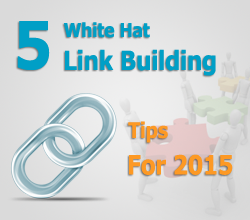On-page SEO is the foundation of any successful digital marketing strategy. It involves optimizing individual web pages to rank higher and attract more relevant traffic from search engines. From keyword placement to content structure, on-page SEO covers multiple elements that work together to improve your site’s visibility. In this guide, you’ll discover key tips, advanced techniques, and common mistakes to avoid, helping you achieve better search engine rankings.
Understanding the Basics of On-Page SEO
On-page SEO focuses on optimizing both the content and the HTML source code of a page. The key components include:
- Meta Tags: Title tags and meta descriptions that help search engines understand your content.
- Headings: Proper use of H1, H2, H3 tags to structure content.
- Keyword Placement: Strategically placing target keywords without keyword stuffing.
- URL Structure: Clean, readable URLs optimized with relevant keywords.
- Internal Linking: Linking to other relevant pages to improve site navigation.
Essential On-Page SEO Tips
To boost your search engine rankings, consider the following tips:
1. Optimize Your Title Tags Effectively
Your title tag is the first thing both search engines and users see. Keep it under 60 characters and include your primary keyword.
Example: <title>Best Digital Marketing Strategies for 2025</title>
2. Write Compelling Meta Descriptions
While meta descriptions don’t directly affect rankings, they influence click-through rates. Write concise, engaging descriptions with a call-to-action.
Example: “Discover the top SEO strategies to boost your website traffic in 2025. Learn actionable tips today!”
3. Use Header Tags Correctly
Organize your content with header tags (H1, H2, H3) to improve readability and SEO.
<h1>Ultimate Guide to SEO</h1>
<h2>Why SEO Matters</h2>
<h3>Key Benefits of SEO</h3>
4. Optimize for Mobile Devices
Ensure your website is responsive. Google uses mobile-first indexing, so a mobile-friendly design is critical.
5. Improve Page Load Speed
Fast-loading pages enhance user experience and SEO rankings. Use tools like GTmetrix or PageSpeed Insights to identify issues.
Advanced On-Page SEO Techniques
Beyond the basics, here are some advanced strategies:
1. Implement Schema Markup
Schema helps search engines understand your content better, enhancing rich snippets in search results.
<script type=”application/ld+json”>
{
“@context”: “https://schema.org”,
“@type”: “Article”,
“headline”: “SEO Strategies for 2025”,
“author”: “John Doe”
}
</script>
2. Optimize Images for SEO
Use descriptive file names and alt text for images. Compress images to reduce load time without compromising quality.
3. Use LSI (Latent Semantic Indexing) Keywords
Incorporate related keywords to help search engines understand the context of your content.
Common On-Page SEO Mistakes to Avoid
Even small mistakes can hurt your rankings. Watch out for these:
- Keyword Stuffing: Overusing keywords makes content unnatural and can trigger penalties.
- Ignoring Image Optimization: Large, uncompressed images slow down your site.
- Duplicate Content: Repeating content across pages confuses search engines and hurts SEO.
- Poor Internal Linking: Lack of internal links can limit search engines’ ability to crawl your site effectively.
- Neglecting Meta Tags: Missing or duplicate meta tags reduce your chances of ranking well.
Expert Advice for Ongoing SEO Success
SEO isn’t a one-time effort. Here are some key takeaways:
- Regularly update content to keep it fresh and relevant.
- Monitor website performance with tools like Google Search Console.
- Focus on user intent—create content that solves problems and answers questions.
Conclusion
On-page SEO is more than just keywords. It’s about creating valuable, well-structured content that’s easy for both users and search engines to understand. By applying the tips and techniques shared here—and avoiding common mistakes—you’ll be well on your way to higher rankings and more organic traffic. Keep experimenting, stay updated with SEO trends, and your efforts will pay off.












